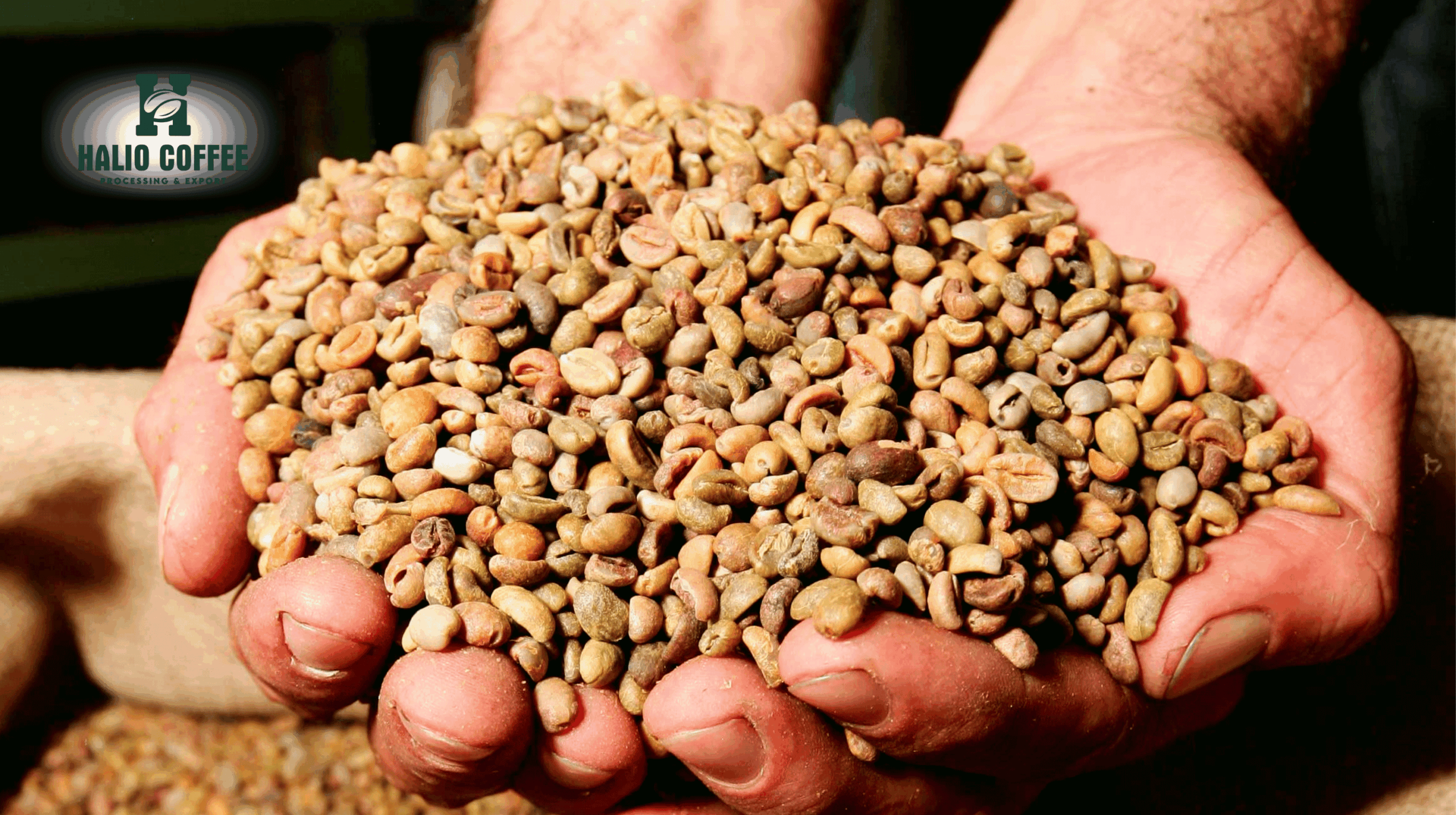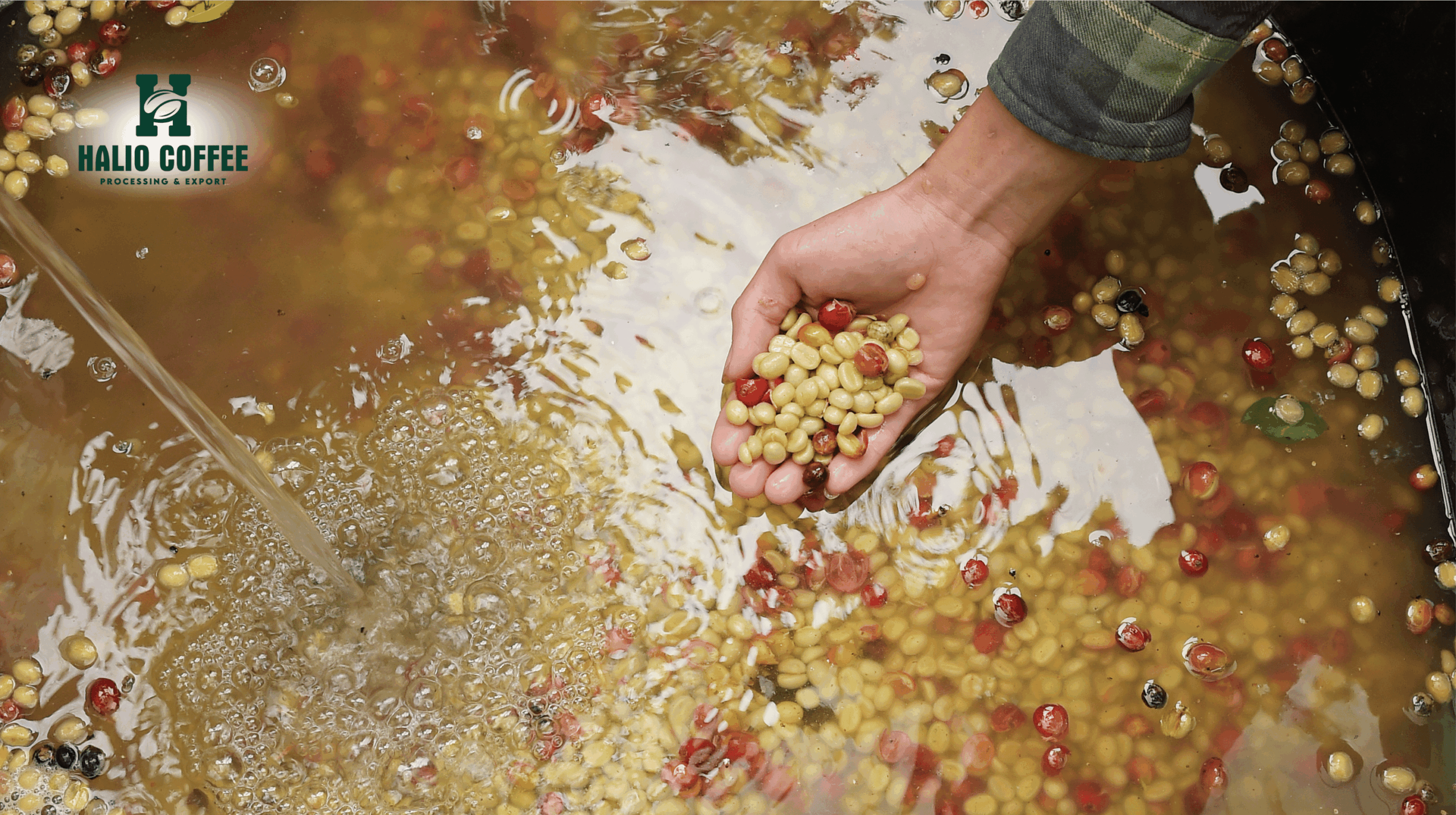Coffee Prices Today: Robusta Surges on Concerns Over Adverse Weather in Vietnam
Coffee prices today rebounded sharply after a previous downturn, with robusta futures leading the gains. Concerns about heavy rains in Vietnam’s Central Highlands—the country’s main coffee-growing region—drove robusta prices higher, while arabica futures also inched upward on spillover sentiment.
Weather-related risks, dwindling inventories, and ongoing trade policy tensions continue to set the tone for coffee markets. At the same time, optimism surrounding Vietnam green coffee beans remains central to the global supply outlook.
Coffee Prices Today on Global Exchanges
By the close of trading on September 22, international coffee prices showed strong upward momentum:
- Robusta Futures (London Exchange):
- November 2025 contract jumped 3.51% (+145 USD), settling at 4,280 USD/ton.
- January 2026 contract rose 3.4% (+139 USD), reaching 4,228 USD/ton.
- Arabica Futures (New York Exchange):
- December 2025 contract gained 0.48% (+1.75 US cents/pound), finishing at 368.25 US cents/pound.
- March 2026 contract added 0.69% (+2.4 US cents/pound), closing at 348.65 US cents/pound.
The rise in robusta contracts was particularly notable, as the market reversed heavy losses from the previous session.
Why Robusta Prices Spiked
According to market analysts, robusta futures surged due to concerns about excessive rainfall in Vietnam’s Central Highlands. The region is entering the final stage of coffee cherry development before the harvest season begins. Heavy, prolonged rains could:
- Cause fruit drop, reducing yields.
- Hinder harvesting logistics by making fields inaccessible.
- Increase risks of fungal disease, lowering bean quality.
With Vietnam accounting for more than 40% of global robusta supply, even modest concerns about weather disruptions can trigger significant price reactions on the London exchange.
Coffee Prices Today and Arabica Market Trends
Although arabica gains were smaller compared to robusta, futures contracts in New York still rose modestly. Analysts point to several supportive factors:
- Dry Weather in Brazil – Somar Meteorologia reported that Minas Gerais, Brazil’s largest arabica-producing state, received only 10.5 mm of rainfall during the week ending September 20, just 73% of the historical average.
- September is a critical flowering period for arabica trees, and insufficient rainfall could impact the next crop cycle.
- Tight Inventories – ICE-certified arabica inventories fell to a 16.75-month low of 654,224 bags as of September 19. The decline reflects weak supply pipelines into the U.S. and Europe.
- Import Tariffs – The 50% U.S. import tax on Brazilian coffee continues to squeeze availability in the U.S. market, where nearly one-third of green coffee imports typically come from Brazil.
These conditions created a floor under arabica futures, preventing sharper declines even amid broader trade policy debates.
Vietnam Green Coffee Beans: Central to the Market
The global coffee industry is watching Vietnam closely, not only because of short-term weather risks but also due to long-term supply prospects. Vietnam green coffee beans are essential for roasters worldwide, especially in the instant coffee and blended segments.
- Short-Term Risk: Heavy rainfall in the Central Highlands threatens to reduce yields and complicate harvesting operations.
- Medium-Term Outlook: Bloomberg reported that Vietnam’s 2025–2026 coffee crop is expected to increase by 6% year-on-year, reaching 1.76 million tons (29.4 million 60-kg bags). This would mark the country’s largest harvest in four years.
- Global Significance: With Vietnam being the world’s largest robusta supplier, any fluctuation in its output directly influences London robusta futures and global price benchmarks.
For global buyers, this dual narrative—weather risk versus harvest optimism—makes Vietnam green coffee beans both a source of concern and an anchor of stability.
Coffee Inventories and Tariff Impacts
Tight coffee inventories have provided additional support to prices:
- Arabica Stocks: Fell to 654,224 bags, the lowest in nearly 17 months.
- Robusta Stocks: Declined to 6,464 lots, also the lowest in 1.75 months.
The situation has been exacerbated by U.S. tariffs:
- Importers in the U.S. are canceling new contracts with Brazilian suppliers due to the 50% tariff.
- With one-third of U.S. coffee imports typically sourced from Brazil, the tariffs are reshaping trade flows.
- This has indirectly increased reliance on alternative suppliers, with Vietnam green coffee beans gaining more importance in filling the gap.
Weather Developments in Brazil and Vietnam
Weather remains one of the most critical factors shaping coffee prices today:
- Brazil: Dry conditions in Minas Gerais threaten flowering, potentially reducing yields for the 2026–2027 crop cycle. Any disruption here has an outsized effect given Brazil’s role as the largest arabica producer globally.
- Vietnam: Heavy rains are forecast to continue throughout September in the Central Highlands. While rainfall is generally beneficial for crop development, excessive precipitation during the late growth stage risks damaging cherries and delaying harvests.
This combination of drought in Brazil and excessive rains in Vietnam has fueled volatility across both arabica and robusta markets.
Market Sentiment and Speculative Activity
Traders also point to increased speculative activity as a driver of recent volatility:
- Buying at Lows: Roasters and speculators stepped in to purchase contracts when prices hit intraday lows, creating a rebound effect.
- Legislative Uncertainty: The previous week’s downturn was triggered by reports in the Washington Post suggesting that U.S. lawmakers were considering a bill to exempt coffee imports from tariffs.
- The news initially caused a sell-off.
- However, with no immediate legislation passed, speculative buyers returned to the market.
This tug-of-war between policy developments and speculative trading is likely to continue influencing short-term price movements.
Global Supply and Demand Outlook
While current concerns focus on short-term weather and tariffs, broader supply-demand dynamics remain in play:
- Vietnam’s Strong Outlook: Despite rain-related risks, long-term forecasts point to a strong harvest. With Vietnam green coffee beans projected to hit their highest output in four years, the global robusta market could see improved availability in 2026.
- Brazil’s Arabica Uncertainty: Weather in September and October will determine the strength of the next crop. Poor rainfall could undermine global supply just as inventories are at multi-year lows.
- Consumer Demand: Rising retail coffee prices in the U.S. and Europe are testing consumer tolerance. However, global demand has remained resilient, with roasters increasingly substituting arabica with robusta to balance costs.
Strategic Importance of Vietnam Green Coffee Beans
Vietnam’s role as a stabilizing force in global coffee supply chains cannot be overstated:
- Diversification: Importers facing supply disruptions from Brazil are increasingly turning to Vietnam green coffee beans to secure consistent volumes.
- Cost Competitiveness: Robusta beans from Vietnam are often more affordable than arabica, making them an attractive option for roasters managing tight margins.
- Market Share Growth: With the U.S. market constrained by tariffs on Brazil, Vietnam is well positioned to expand its share of exports to North America and Europe.
As a result, Vietnam green coffee beans are expected to play a decisive role in shaping not only coffee prices today but also long-term trade flows.
The Interplay of Policy, Weather, and Speculation
The current surge in robusta prices illustrates how multiple forces converge to shape global coffee markets:
- Policy Decisions – Tariffs or exemptions by the U.S. government can rapidly alter supply chains.
- Weather Patterns – Drought in Brazil or floods in Vietnam immediately impact supply expectations.
- Speculative Positions – Hedge funds and commodity traders amplify price swings through rapid position shifts.
For producers, roasters, and investors, navigating this environment requires constant monitoring of both physical fundamentals and policy developments.
- Dry Process Coffee: Unlocking the Fruit-Forward Complexity of Green Coffee Beans from Vietnam
- The QC Blueprint: A Consultant’s Guide to Quality Control for Vietnam Coffee Export
- The Modern Buyer’s Playbook: How to Shop for Coffee Direct from the Source
- Coffee Prices Today, October 8th: Continue to Decline on Optimistic Signals from US-Brazil Trade Talks
- The Importer’s Playbook: A Step-by-Step Guide on How to Import Coffee from Vietnam







